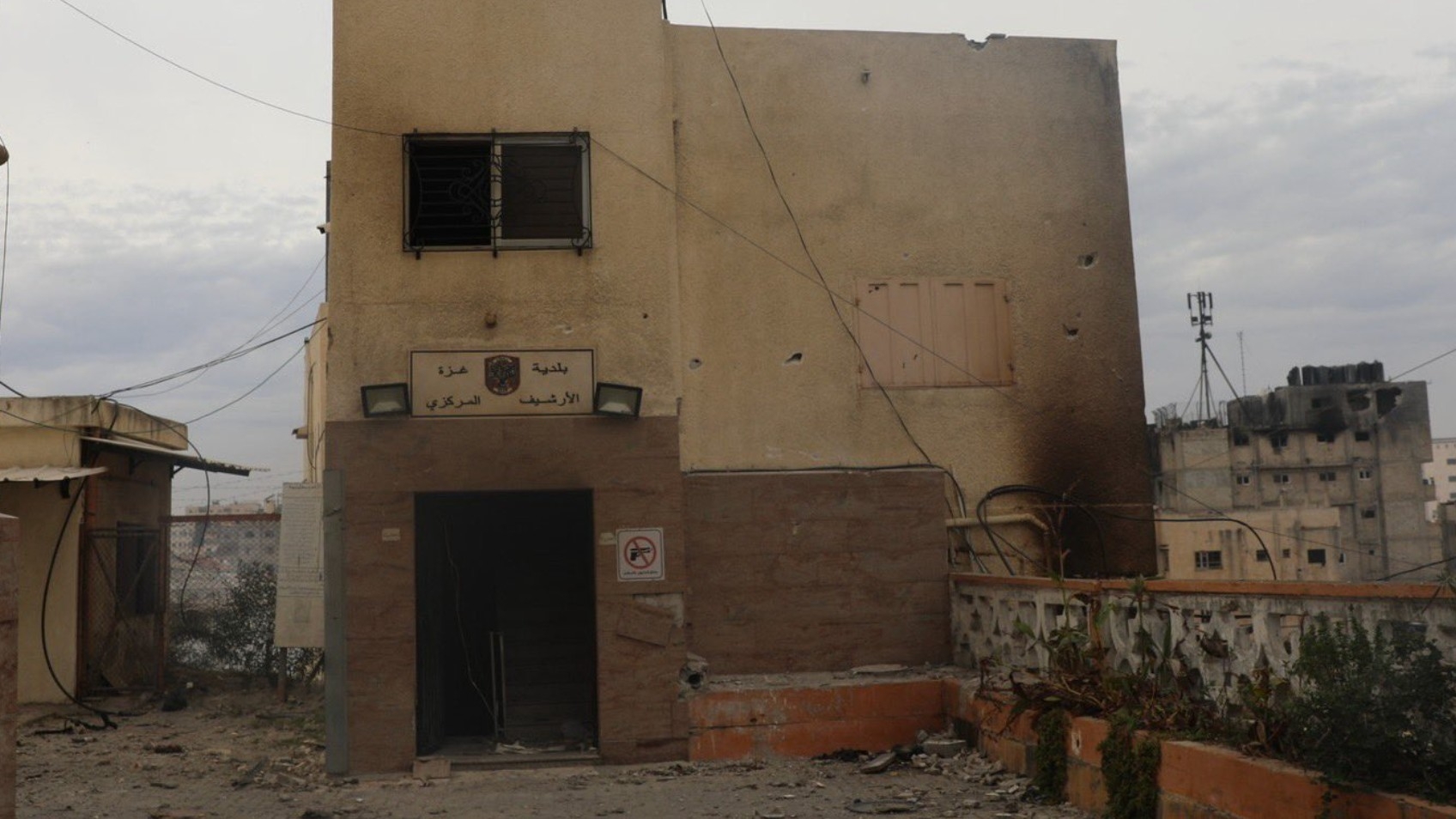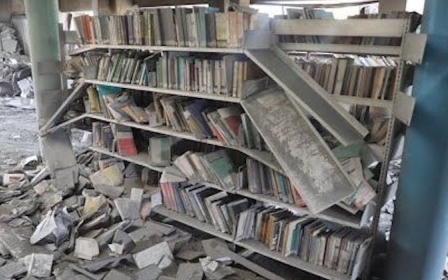Israel-Palestine war: Israeli forces destroy central archive of Gaza city

Heavy Israeli bombardment has destroyed the central archive of Gaza City, according to the Gaza municipality.
Photos published by local media and Birzeit University in the occupied West Bank showed the building heavily damaged, with papers and documents littering the floor.
“The Israeli occupation destroys the central archive of Gaza municipality, executing thousands of historical documents, and deliberately razing all life forms, erasing the city and its history,” Birzeit University posted on social media platform X on Wednesday.
“It is worth noting that the archive holds documents more than one hundred years old,” it added.
Social media users have lambasted Israel’s bombing of the central archive, calling it an attempt at “removing the history of Palestinians”.
“Israel for 75 years tried not just to erase us, but to destroy our history, distort it, twist it to fit their narrative and steal or burn our heritage. That’s why they wiped out 500+ Palestinian villages, bombed the oldest church in Gaza and the central archive of its municipality,” one social media user wrote.
The building was previously targeted by Israeli air strikes on 29 November, with the head of Gaza’s municipality, Yahya al-Sarraj, saying the attack poses “a great danger to the city”, as the building was home to “thousands of historically valuable documents for the community”.
“These documents represent an integral part of our history and culture,” he told Anadolu news agency.
“The Central Archives contain plans for ancient buildings of historical value and documents in the handwriting of well-known national figures,” he added.
Other notable cultural spaces have also been damaged in Israel’s bombing campaign of Gaza, including cultural centres, public parks, the Gaza zoo and Gaza’s main public library.
According to Sarraj, the Rashad al-Shawwa Historical Cultural Centre, which houses a library and theatre, as well as the Palestinian Legislative Council and the memorial monument in the Memorial Park, were also destroyed.
Sarraj said that Israel is intentionally targeting important buildings and civilian infrastructure in Gaza, which has long-term impacts on the besieged enclave’s historical heritage and identity.
'The attempt by the occupation to destroy everything beautiful, to erase Palestinian memory… is making Palestinian cities uninhabitable'
– Yahya al-Sarraj, head of Gaza’s municipality
“The attempt by the occupation to destroy everything beautiful, to erase Palestinian memory, and to impose a policy of obscuring the people, is making Palestinian cities uninhabitable,” he said.
Last month, Gaza’s main public library was left in ruins following heavy Israeli bombardment.
Officials decried the targeting of the building as a “deliberate attempt to destroy historical documents and books”.
Photos of the destroyed building, with books scattered around on the floor, were released by the municipality.
The library was in regular use by members of the community, including schoolchildren, before the start of the latest conflict on 7 October.
Video footage shared by Storyful, a social media intelligence agency and open source intelligence and verification platform, showed the destroyed building and the collapsed bookshelves inside.
The bombing of the library was condemned widely online, as well as by international organisations. Literary Hub, a daily literary website launched in 2015, compared it to the 1992 attack on the library in Sarajevo, where Bosnian Serb forces, stationed in the hills above the city, razed the National and University Library of Bosnia and Herzegovina to the ground.
Middle East Eye propose une couverture et une analyse indépendantes et incomparables du Moyen-Orient, de l’Afrique du Nord et d’autres régions du monde. Pour en savoir plus sur la reprise de ce contenu et les frais qui s’appliquent, veuillez remplir ce formulaire [en anglais]. Pour en savoir plus sur MEE, cliquez ici [en anglais].




